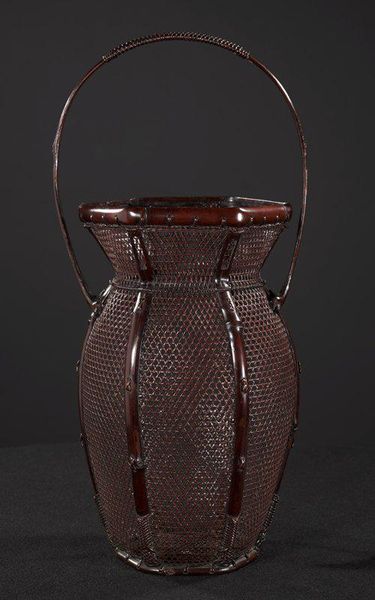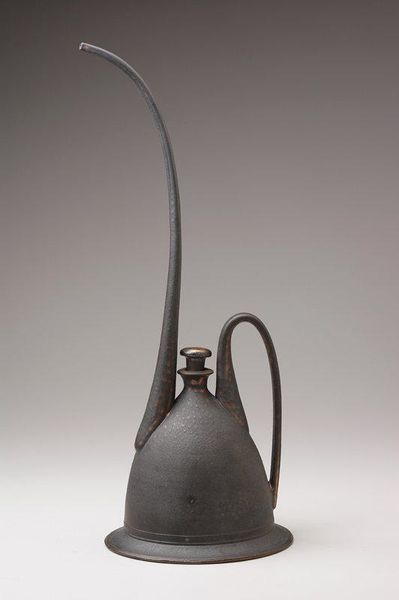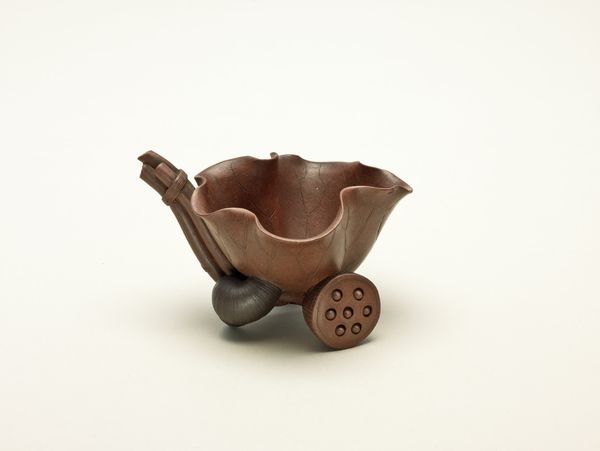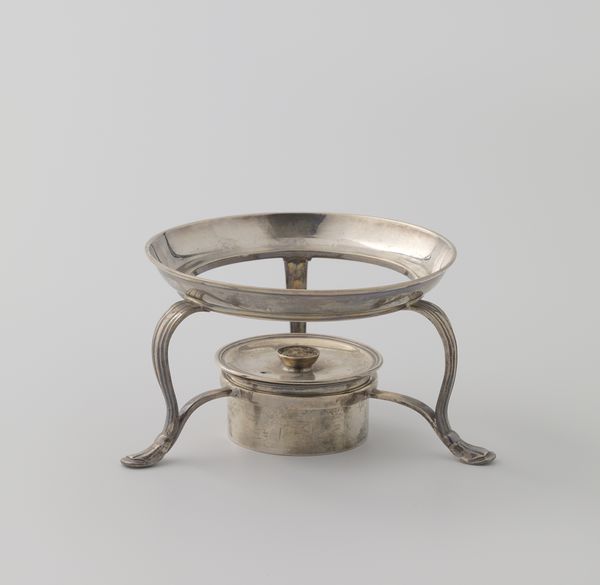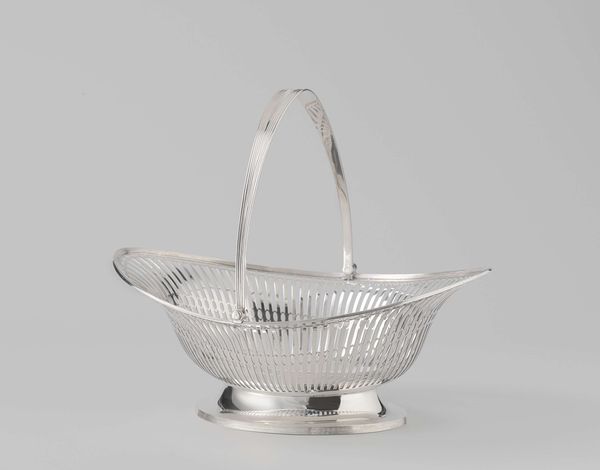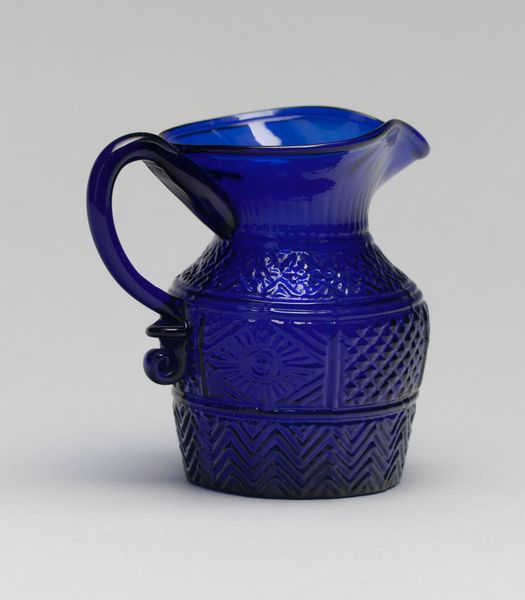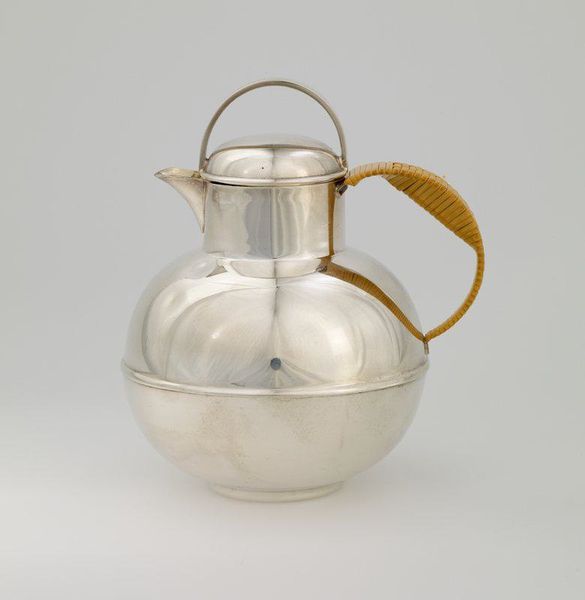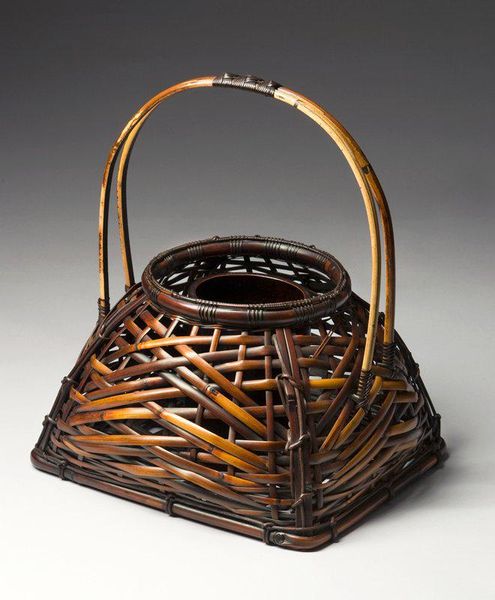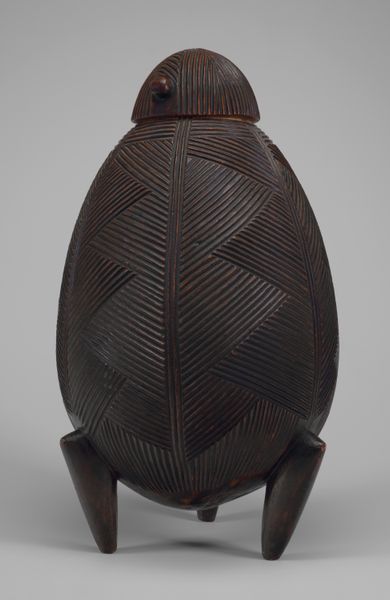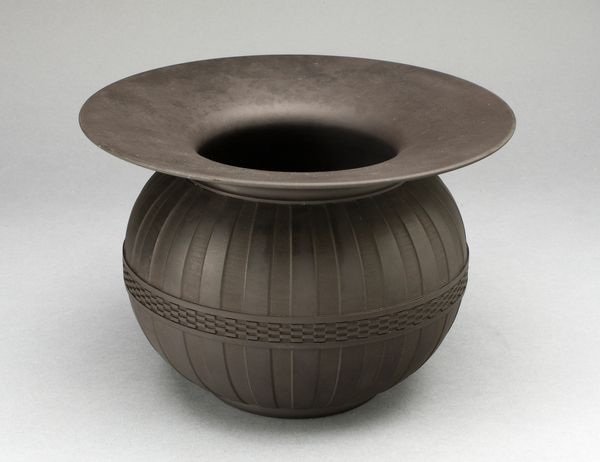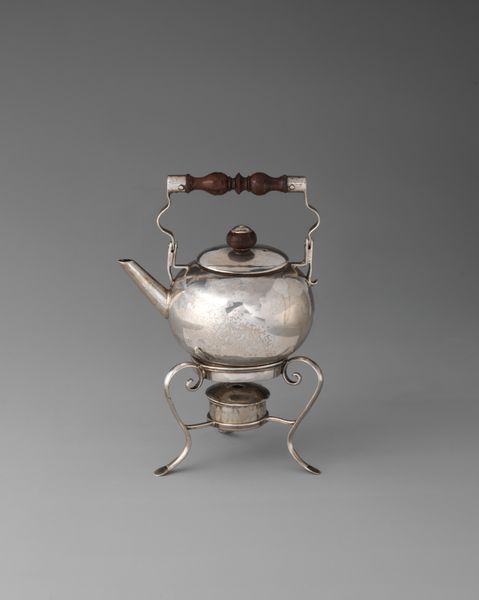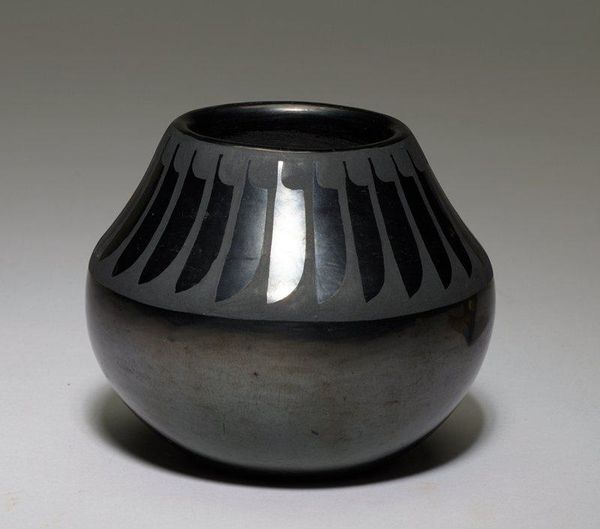
wood
#
asian-art
#
japan
#
orientalism
#
ceramic
#
wood
#
decorative-art
Dimensions: 63.1 × 44.3 × 24.4 cm (24 1/8 × 17 1/2 × 9 5/8 in.)
Copyright: Public Domain
Curator: Standing before us is a piece titled "Peony Basket" created sometime between 1920 and 1940 by Wada Rinshi. The materials consist of wood. It currently resides here at The Art Institute of Chicago. Editor: My immediate impression is one of graceful constraint. The dark, woven texture creates a vessel that seems to both hold and suggest abundance, despite its delicate framework. Curator: I find it intriguing to consider these baskets within the historical context of Japanese decorative arts, specifically regarding their role within gift-giving culture. It reflects how such functional objects could also become highly valued cultural signifiers. Editor: Absolutely. The peony, in itself, is heavy with symbolic meaning in East Asian cultures. Representing wealth, honor, and even masculine beauty, its presence transforms this utilitarian item into something far more significant. Consider also, how the woven texture recalls organic forms yet remains firmly geometric. The basket both embraces and domesticates nature. Curator: It also appears the handle of the basket allows it to be hung. So many levels of ritualized gift giving in Asian cultures, often for presentation in public display. In thinking about display, how does the act of presenting flowers in a woven basket modify the flowers symbolic associations? Editor: It potentially elevates them! Woven work and presentation is another act of artistic gesture, deepening respect. By carefully placing peonies within such a deliberately crafted container, the giver emphasizes not only wealth and honor, but a deep understanding of interconnected aesthetic and social values. The artistry here really blurs the lines. Curator: The blending of functional object and artistic expression challenges the divide between craft and fine art, and the artist uses historical expectations of artistic display to comment on social rituals. The object transforms function into cultural statement. Editor: Indeed! And examining it has made me freshly aware of the layers of meaning woven quite literally, I might add, into this seemingly simple form. Curator: I concur! Looking at this with a fresh sense of cultural history has really challenged my perspective of form versus function in art.
Comments
No comments
Be the first to comment and join the conversation on the ultimate creative platform.
